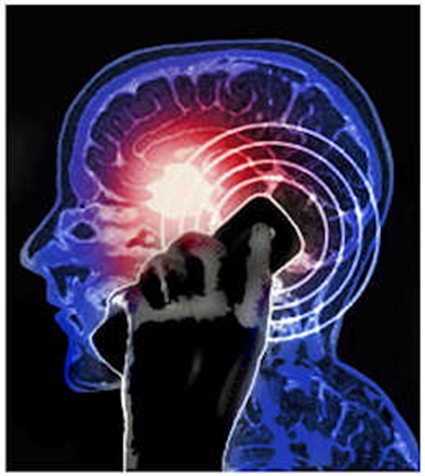June 8, 2016
Would government protect Canadians against cell phone radiation?

News that Tragically Hip Front man Gord Downie is suffering from an aggressive form of incurable brain cancer known as glioblastoma - one of the most common causes of cancer death in Canadians between 40 and 60 years old - is creating renewed interest in research studies drawing a link between cell phone use and brain cancer.
Dr. Paul Demers, of Cancer Care Ontario, said that from a health point of view this is an important issue we have to continue to look at it and resolve whether or not this does cause cancer in humans.
In 2011, the World Health Organization (WHO) classified radiation from cell phones as possibly causing cancer in humans.
Meanwhile, a major U.S. government study on rats has found a link between cellphones and cancer. In one of the biggest and most comprehensive studies into health effects from cellphones, The National Toxicology Program (NTP) found “low incidences” of two types of tumors in male rats that were exposed to the type of radio frequencies that are commonly emitted by cellphones. The tumors were gliomas, which are in the glial cells of the brain, and schwannomas of the heart.
Some epidemiological studies previously found similar results: Those studies found instances of gliomas and acoustic neuromas, which were key factors in the WHO’s decision to classify cellphone radiation as a possible carcinogen. The NTP report noted that its findings “appear to support” the classification.
By exposing thousands of rats to greater intensities of radio-frequency (RF) radiation than in previous studies to date, researchers discovered a direct dose–response relationship. Although the overall incidence of these tumors is still relatively low, this is not surprising considering that these are rare tumors; but more tellingly, the incidence grew with greater levels of exposure to the radiation. Moreover, none of the control rats—those not exposed to the radiation—developed such tumors.
Researchers found that the relationship between RF exposure and lesions of the heart was stronger than it was for lesions of the brain: All male rates in exposed groups had cardiac schwannomas but no biologically significant effects were observed in the brain or heart of female rats. Based on these findings, Chris Portier, a retired head of the NTP, who helped launch the study and still sometimes works for the federal government as a consultant scientist, said he has no doubt that radiation exposure caused the cancer in the rats.
Based on these findings, Mr. Portier said that this is not just an associated finding - but that the relationship between radiation exposure and cancer is clear.
“I would call it a causative study, absolutely. They controlled everything in the study. It’s [the cancer] because of the exposure.”
Meanwhile, the U.S. government’s official position is that the weight of scientific evidence hasn’t indicated health risks. This may be due to the fact that current cellphone safety standards are focused on heating effects from radio-frequency energy, that measure acute injury from thermal effects, not long-term, low-level exposure. Tests for safe use of cellphones were designed in the 1990s around this heating effect.
Moreover, the NTP noted that data from human studies has been “inconsistent.” Such studies are also hampered by the realities of testing in humans, such as recall bias - meaning cancer patients have to try to remember their cell phone use from years before, and how they held their handsets. Those data gaps prompted the NTP to engage in planning these new animal studies back in 2009.
While earlier studies had never found that this type of radiation was associated with the formation of these cancers in animals at all, none of those studies followed as many animals, for as long or with the same larger intensity exposures, according to Ron Melnick, a scientist who helped design the study and is now retired from the NTP.
“Where people were saying there’s no risk, I think this ends that kind of statement,” said Dr. Melnick, who ran the NTP project until retiring in 2009 and recently reviewed the study’s results.
While not all biological effects observed in animals necessarily apply to humans, the National Toxicology Program’s $25 million study is one of the biggest and most comprehensive experiment
The latest findings could lead to changes in safety standards, such as only talking on a cellphone while using a headset and keeping the devices out of pants pockets. There is also a growing demand for warning labels on cell phones.
Joel Moskowitz, head of UC Berkeley's Center for Family and Community Health, in the School of Public Health at the University of California, Berkeley, believes that such labels are needed. He's been studying the issue since 2009, and has concluded that cell phones are "one of the top emerging public health risks."
“Exposure to radio-frequency, or RF radiation is a major risk of cellphone use. Manufacturers have a legal duty to provide warnings that are clear and conspicuous when products raise health and safety concerns. But, typically, RF safety instructions are buried in user manuals with tiny print, hidden within smartphones, or made available on the Internet.”
Dr. Moskowitiz also said studies cited by the cell phone industry are outdated.
“Newer and more complex wireless technology, coupled with people spending increasing amounts of time on their phones, is almost certain to lead to an uptick in brain cancer.”
He added that "It's just a matter of time. The evidence is a lot more compelling than it has been."








